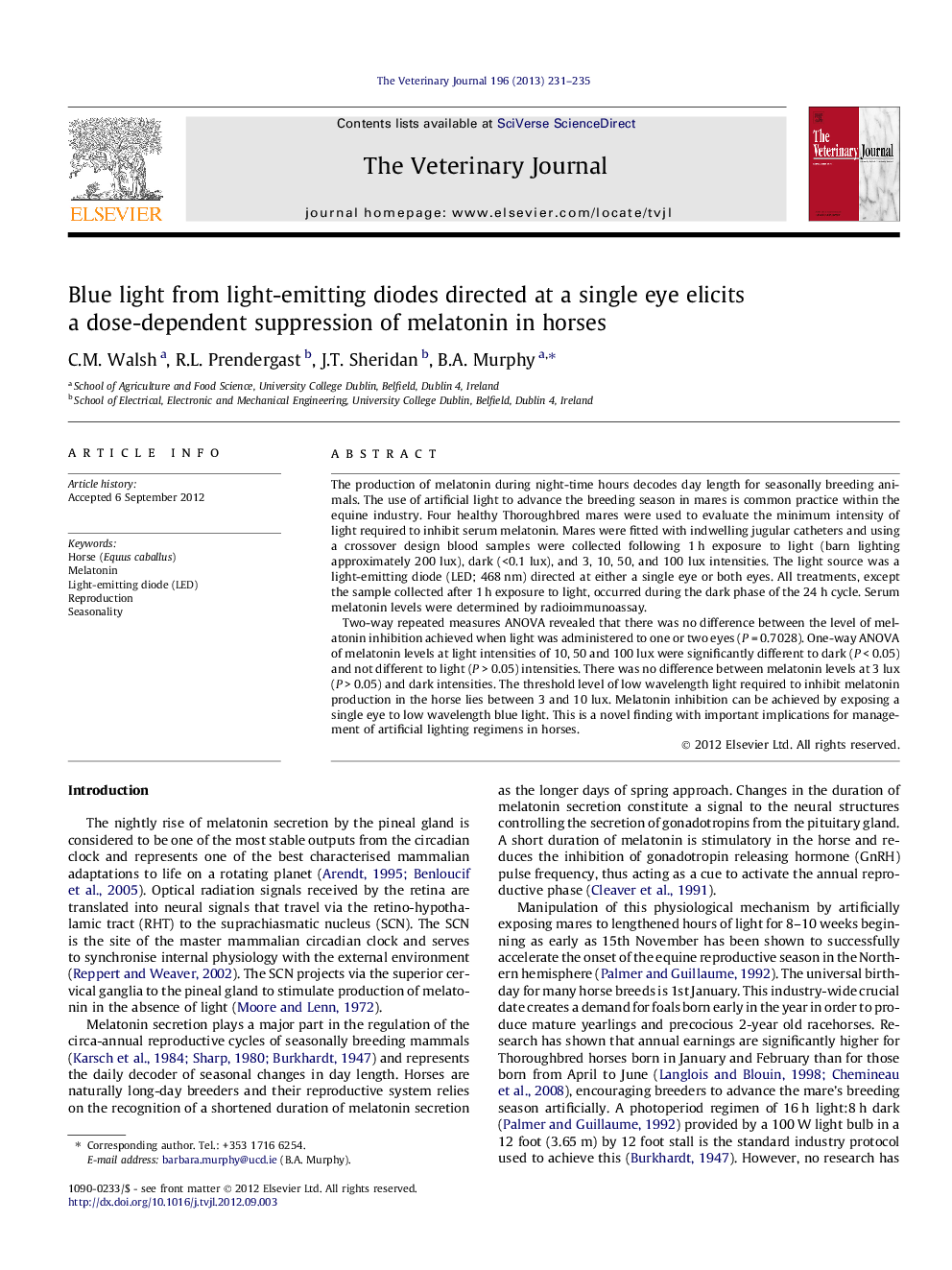| کد مقاله | کد نشریه | سال انتشار | مقاله انگلیسی | نسخه تمام متن |
|---|---|---|---|---|
| 2464083 | 1111772 | 2013 | 5 صفحه PDF | دانلود رایگان |

The production of melatonin during night-time hours decodes day length for seasonally breeding animals. The use of artificial light to advance the breeding season in mares is common practice within the equine industry. Four healthy Thoroughbred mares were used to evaluate the minimum intensity of light required to inhibit serum melatonin. Mares were fitted with indwelling jugular catheters and using a crossover design blood samples were collected following 1 h exposure to light (barn lighting approximately 200 lux), dark (<0.1 lux), and 3, 10, 50, and 100 lux intensities. The light source was a light-emitting diode (LED; 468 nm) directed at either a single eye or both eyes. All treatments, except the sample collected after 1 h exposure to light, occurred during the dark phase of the 24 h cycle. Serum melatonin levels were determined by radioimmunoassay.Two-way repeated measures ANOVA revealed that there was no difference between the level of melatonin inhibition achieved when light was administered to one or two eyes (P = 0.7028). One-way ANOVA of melatonin levels at light intensities of 10, 50 and 100 lux were significantly different to dark (P < 0.05) and not different to light (P > 0.05) intensities. There was no difference between melatonin levels at 3 lux (P > 0.05) and dark intensities. The threshold level of low wavelength light required to inhibit melatonin production in the horse lies between 3 and 10 lux. Melatonin inhibition can be achieved by exposing a single eye to low wavelength blue light. This is a novel finding with important implications for management of artificial lighting regimens in horses.
Journal: The Veterinary Journal - Volume 196, Issue 2, May 2013, Pages 231–235